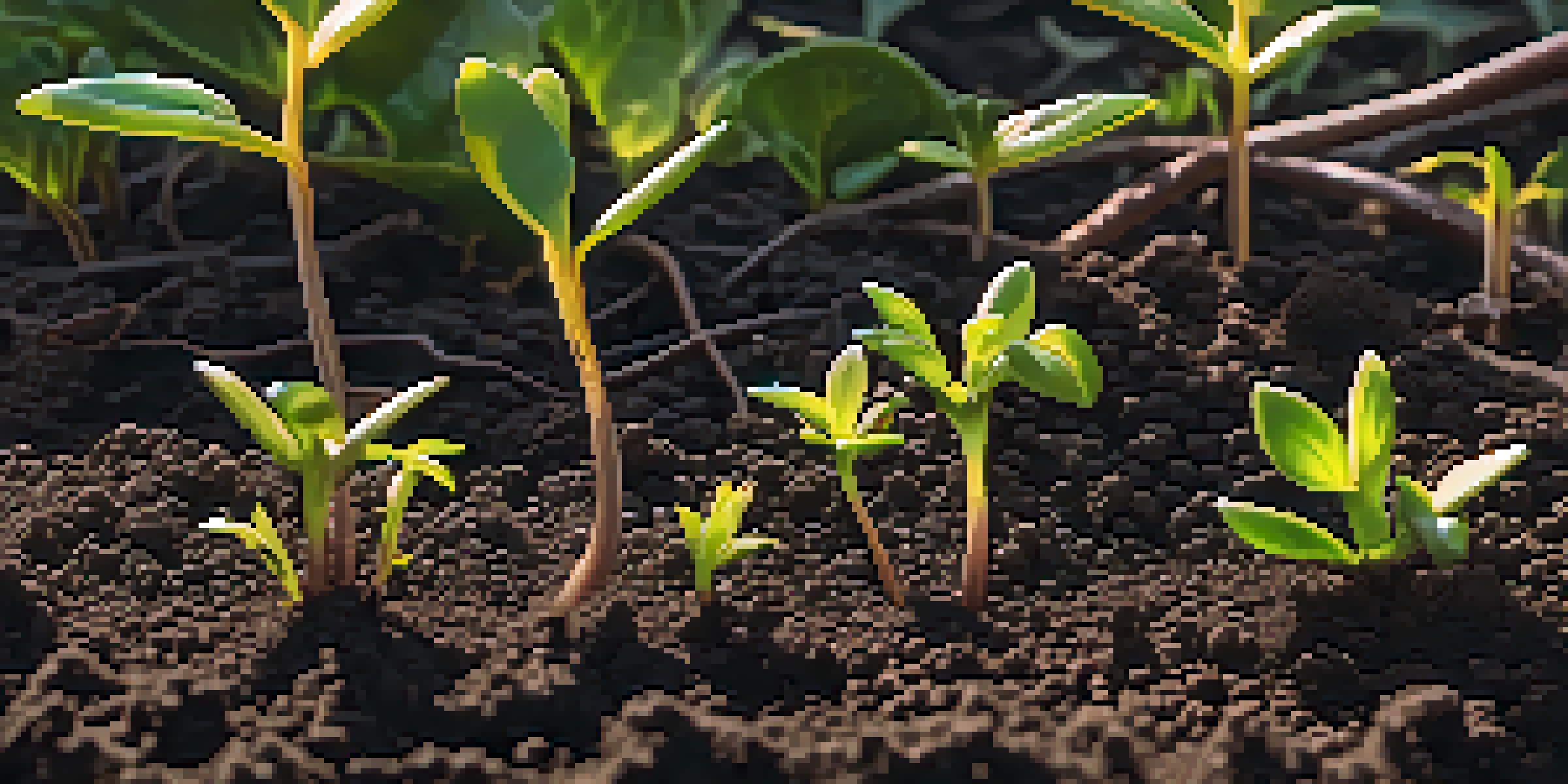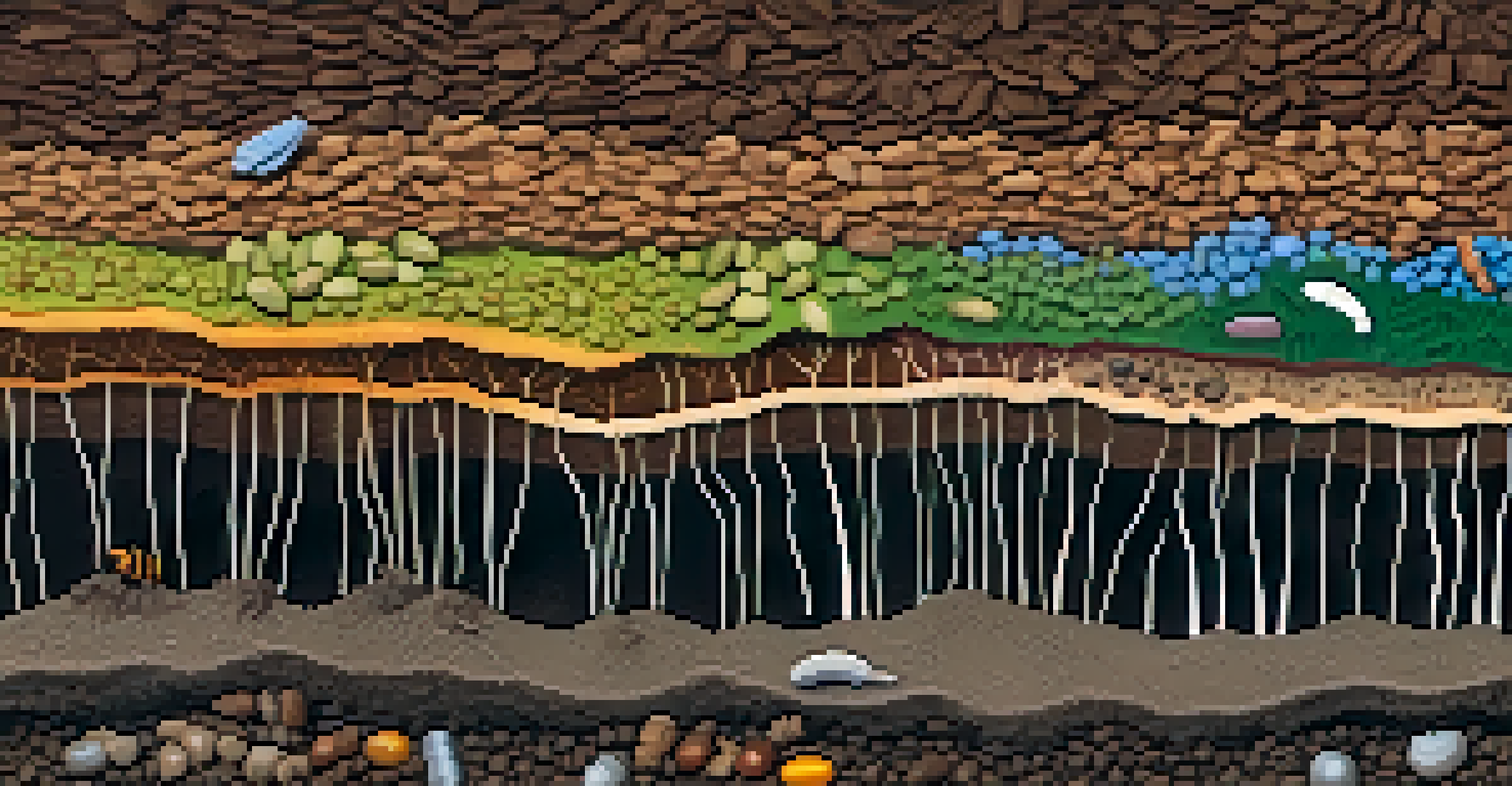The Sacredness of Soil: Spiritual Lessons from the Earth

Understanding the Spiritual Connection to Soil
Soil is often seen as just dirt beneath our feet, but it holds deep spiritual significance. Many cultures view soil as a sacred entity, symbolizing fertility, growth, and connection to the earth. This connection reminds us that we are part of a larger ecosystem, where every element plays a crucial role in sustaining life.
The soil is the great connector of lives, the source and destination of all. It is the healer and the resurrector, a living entity that our lives depend on.
When we dig our hands into the soil, we engage in a tactile experience that grounds us. It’s a reminder of our origins and the cycles of life and death that underscore our existence. Just as soil nourishes plants, it symbolizes the nurturing aspects of life, urging us to reflect on how we can nurture ourselves and others.
Moreover, soil serves as a metaphor for personal growth. Just as plants require rich, healthy soil to thrive, we too need a supportive environment to flourish. This realization encourages us to cultivate our own 'soil'—the relationships, experiences, and values that promote our growth.
Lessons of Patience from the Earth
One of the most profound lessons we can learn from soil is patience. The process of growth takes time, and nature teaches us that good things often require waiting. Just as a seed must first germinate underground, we too must allow time for our dreams to develop.

In our fast-paced world, it’s easy to rush through life, seeking immediate results. However, soil reminds us that nurturing takes time and effort. When we cultivate our passions and goals, we must be patient with ourselves, understanding that transformation is a gradual process.
Soil Symbolizes Life's Nurturing Cycle
Soil represents growth and connection, reminding us of our need for supportive environments to thrive.
This lesson of patience can be applied to our relationships and personal development. Just as a garden flourishes with care, our connections deepen and evolve over time, requiring patience and understanding to blossom fully.
Soil as a Source of Resilience and Strength
Soil is not only a nurturing force but also a resilient one. It absorbs rainwater, withstands drought, and regenerates after storms. This resilience serves as a powerful metaphor for our own lives, reminding us that we can endure challenges and emerge stronger.
Nature is not a place to visit. It is home.
When faced with adversity, we can look to soil as an example of how to adapt and thrive. Just as different plants find ways to grow in varying conditions, we too can learn to navigate our struggles and find our unique paths to strength.
This connection to resilience encourages us to embrace our own challenges. By recognizing that hardships can lead to growth, we can shift our perspectives and cultivate a mindset of strength and adaptability.
The Cycle of Life: Birth, Death, and Renewal
Soil embodies the cycle of life, illustrating how birth, death, and renewal are interconnected. When plants die, they decompose and enrich the soil, creating the conditions for new life to flourish. This cycle serves as a reminder that endings can lead to new beginnings.
In our own lives, we often experience moments of loss and change. Embracing the cycle of life allows us to view these experiences as opportunities for growth. Just like soil transforms through decay and rebirth, we too can find strength in our transitions.
Patience and Resilience from Soil
Soil teaches us that growth takes time and that resilience in the face of challenges can lead to strength.
By understanding this cycle, we can cultivate a mindset that welcomes change. Recognizing that each ending lays the groundwork for new opportunities encourages us to let go and trust in the natural flow of life.
Soil and Community: Building Connections
Soil teaches us about the importance of community and interdependence. Just as various organisms in the soil work together to create a healthy ecosystem, we thrive when we build connections with others. These relationships nourish us, much like soil nourishes plants.
In a world that sometimes feels divided, soil reminds us of our shared humanity. Each person contributes to the larger community, and by supporting one another, we create a rich environment for growth and understanding.
This lesson encourages us to engage with our communities, fostering connections that uplift and inspire. By nurturing our relationships, we not only enrich our own lives but also contribute to a healthier, more vibrant world.
Gratitude for the Earth and Its Gifts
Cultivating an appreciation for soil fosters gratitude for the earth’s gifts. The very food we eat and the oxygen we breathe are products of the intricate systems within the soil. Recognizing this connection encourages us to honor and protect our environment.
Gratitude can transform our perspective, prompting us to engage in sustainable practices that support the health of the earth. When we understand the vital role soil plays in our lives, we become more conscious of our actions and their impact on the environment.
Community and Connection Through Soil
Soil highlights the importance of interdependence, showing us that nurturing relationships enrich our lives.
This sense of gratitude can lead to a more fulfilling life, as we become more aware of the interconnectedness of all things. By appreciating the gifts of the earth, we cultivate a deeper respect for nature and our place within it.
Embracing Simplicity: Lessons from the Soil
Soil teaches us the value of simplicity. In a world filled with distractions and complexities, the earth’s fundamental elements remind us to appreciate the basic things in life. The simplicity of soil represents grounding, stability, and the essence of life itself.
By embracing simplicity, we can declutter our minds and focus on what truly matters. Just as plants thrive in uncomplicated soil, we too can flourish when we strip away the unnecessary and concentrate on our core values.

This lesson encourages us to find joy in the simple aspects of life—nature, relationships, and self-care. By prioritizing simplicity, we cultivate a sense of peace and fulfillment that aligns with the rhythms of the earth.